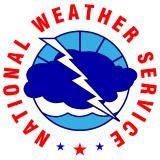Southeast Climate Monthly Webinar: July 25, 2023
Temperature varied across the Southeast region, with below-average temperatures across the interior of the region while the southern tier and Caribbean remained hot and humid. Precipitation was also variable where much of Tennessee, Alabama, and Virginia experienced above-average rainfall with some localized flooding, while much of Georgia and Florida were drier than average. Drought conditions are primarily constrained to the western Florida Peninsula and the Caribbean, with small areas of drought lingering across northern portions of Alabama and Virginia. Streamflows are mostly near normal across the Southeast, with some pockets of above normal. While agricultural crop fungal diseases have increased rapidly due to hot and humid conditions, many crops are doing well and are being harvested successfully.
Looking Ahead: Temperatures are expected to be above average over the next two weeks, with wetter conditions across the northern tier and drier conditions across the southern tier; warm weather is expected to persist during weeks 3 and 4, with wet conditions expected across the Florida Peninsula and the East Coast. Three-month outlooks expect temperatures to be above average with above-average precipitation expected across the middle of the region and the Caribbean; drought removal is likely across the region with no new development expected. Overall through the 3-month period, the river flood risk is forecast to be near what is typical for the interior Southeast river systems. This is our active tropical season, especially in September for the Southeast. El Niño conditions are expected to persist and strengthen into the Northern Hemisphere winter.
Check out this month’s special presentation, “Flash Drought in the Southeast: A review of past events and the unique characteristics of the southeast region” from Lee Ellenburg at the University of Alabama in Huntsville and the Alabama State Climatologist Office.
About This Webinar
The Southeast Climate monthly webinar series is hosted by the Southeast Regional Climate Center, the National Integrated Drought Information System (NIDIS), and the NOAA National Weather Service. These webinars provide the region with timely information on current and developing climate conditions such as drought, floods, and tropical storms, as well as climatic events like El Niño and La Niña. Speakers may also discuss the impacts of these conditions on topics such as agriculture production, water resources, wildfires, and ecosystems








